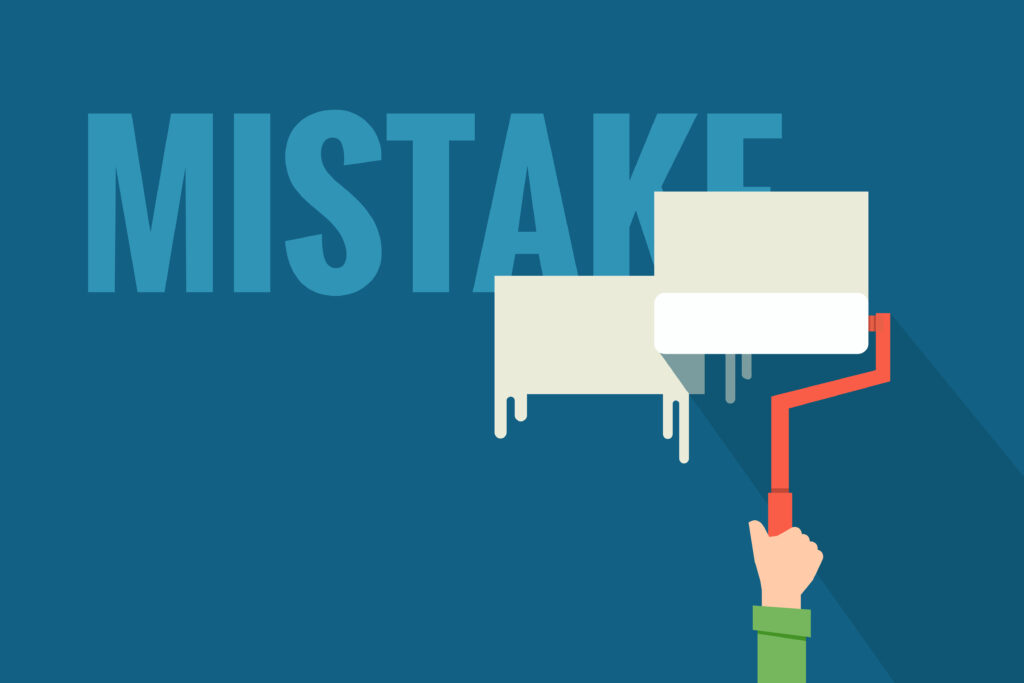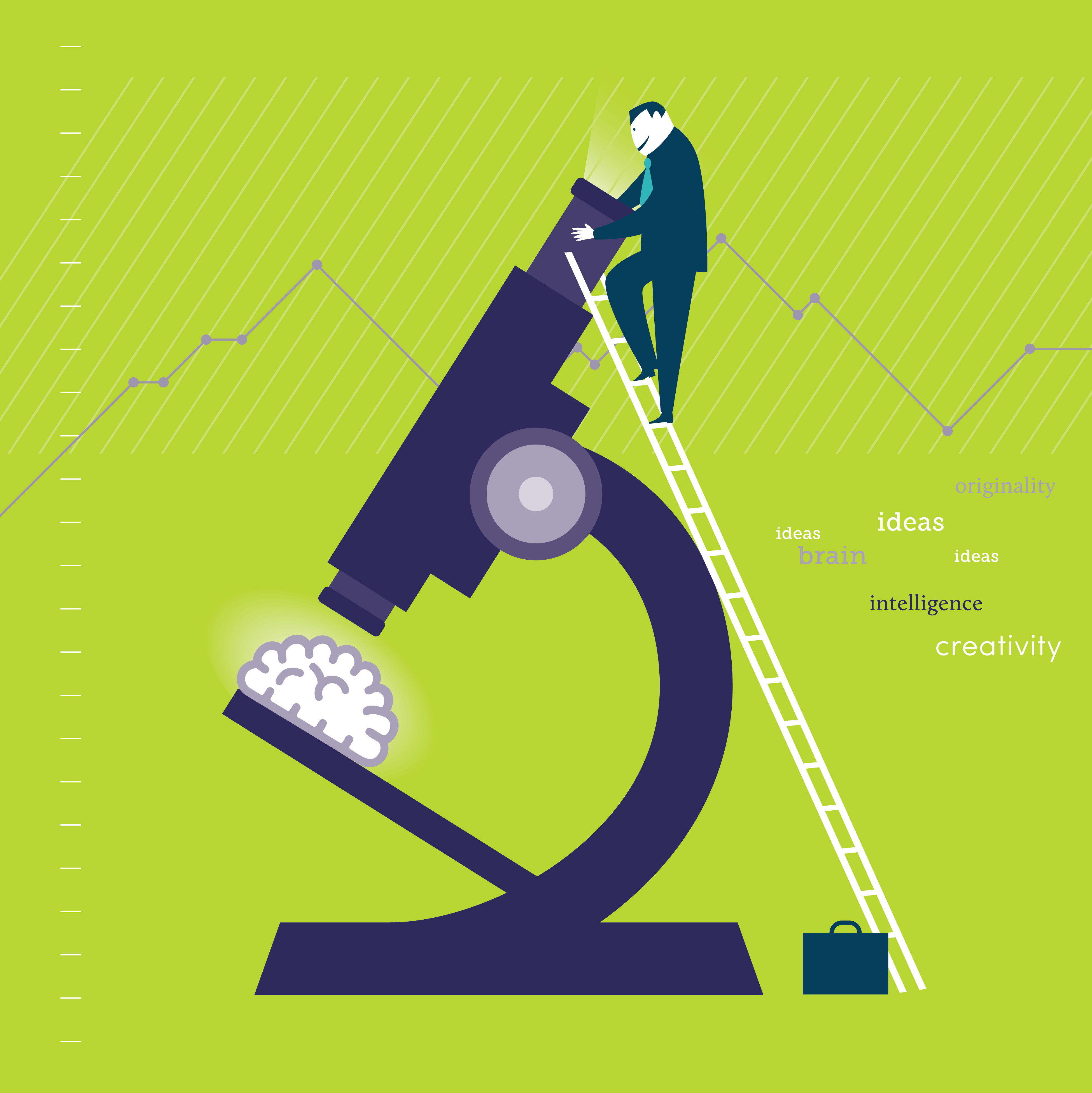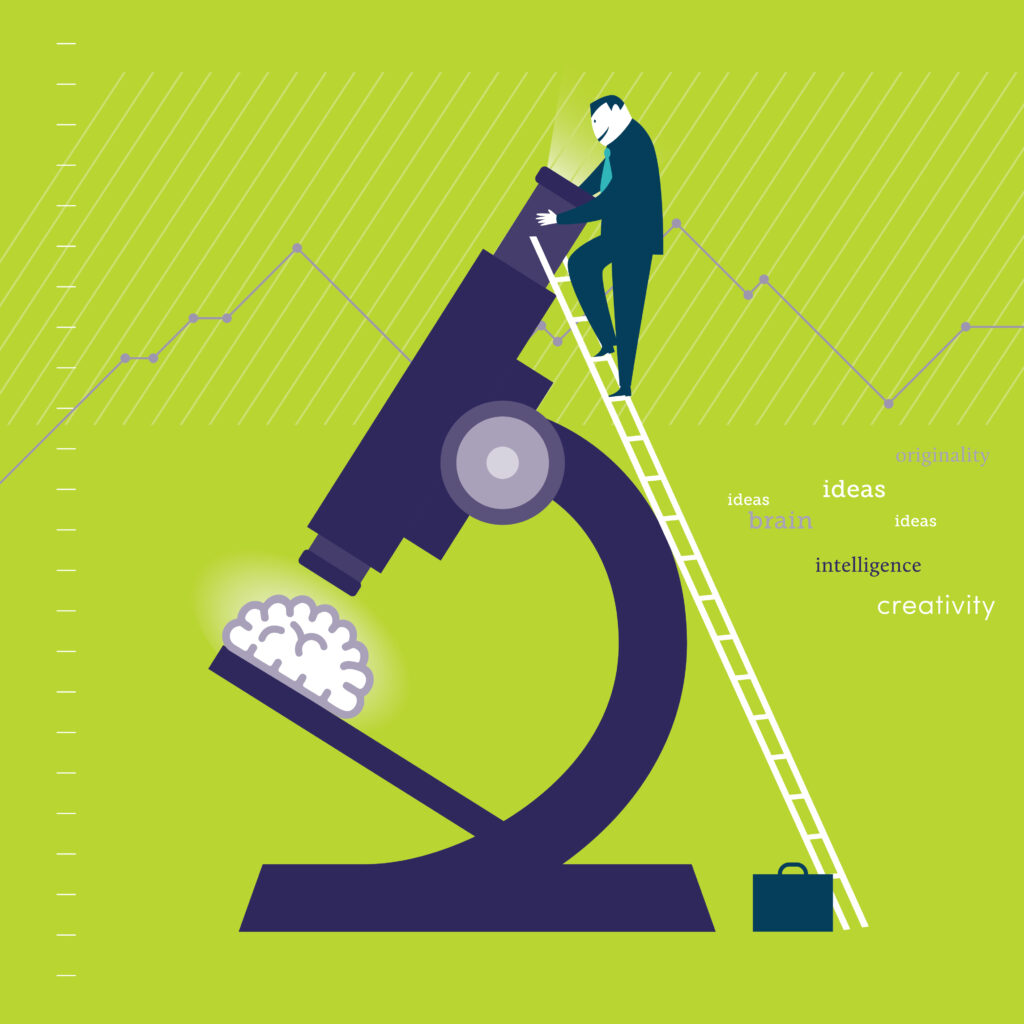

What’s Worse? Making a Mistake or Poorly Processing the Mistake?
Susan hasn’t been the same since she made a mistake in a meeting with an important potential client. She used to be the most confident member of the sales team. Now she’s hesitant to go after new accounts.
While Susan’s manager Glenn is frustrated with her mistake, what he really wants is his confident and high-producing salesperson back.
What’s getting in the way of Susan’s recovery from her mistake?
What can Glenn do to help her move on?
Replaying Mistakes in Your Mind
Ever since her mess-up, Susan has replayed the events in her head. The soundtrack for that mental film: “How could I have been such an idiot? I should have known that strategy wouldn’t work with this guy. Why didn’t I read his cues that I was off-track sooner? I’ve lost it. I’ve just been fooling myself to think I am good at this job.”
No wonder Susan feels hesitant. With that constant stream of negative self-talk, she’s continually reinforcing her feelings of shame and fear. Susan is triggering brain activity that keeps her in the brain’s “low road” emotion centers instead of the “high road” part that allows for clear thought and creativity.
Here’s what Daniel Goleman said about this phenomenon in his book, Social Intelligence: The New Science of Human Relationships:
“When we are under stress the HPA axis roars into action, preparing the body for crisis. Among other biological maneuvers, the amygdala commandeers the prefrontal cortex, the brain’s executive center…. As our brain hands decision-making over to the low road, we lose our ability to think at our best. The more intense the pressure, the more our performance and thinking will suffer. The ascendant amygdala handicaps our abilities for learning, for holding information in working memory, for reacting flexibly and creatively, for focusing attention at will, and for planning and organizing effectively….
The neural highway for dysphoria runs from the amygdala to the right side of the prefrontal cortex. As this circuitry activates, our thoughts fixate on what has triggered the distress. And as we become preoccupied by, say, worry or resentment, our mental agility sputters. Likewise, when we are sad activity levels in the prefrontal cortex drop and we generate fewer thoughts. Extremes of anxiety and anger on the one hand, and sadness on the other, push brain activity beyond its zones of effectiveness.”
Recovering from Mistakes
Cleaning up after a mistake requires a range of practical and mental steps. For Susan, the key is to shift away from replaying the scene continuously in her mind. Being able to change her focus from that past incident will help ease the brain chemicals triggering her distress. Goleman wrote about such recovery in “Can You Pass this Stress Test?”:
“There’s a simple way to increase our recovery time from stress, as research at the lab run by Richard Davidson, a neuroscientist at the University of Wisconsin shows: rehearse letting go of our thoughts and returning our attention to a chosen topic. That mental move is the essence of mindfulness, or any other meditation. In my own research at Harvard on this, I found that people who meditated recovered more quickly from a stressful challenge later. I start my own day with such an inner workout.”
How Managers Respond to Mistakes
Glenn has a choice. He can come down hard on Susan and reprimand or punish her. Or he can help her learn from the mistake and move on. That second, kinder path doesn’t mean he accepts what she did. He can talk with her about how it impacts business and look at how she could have done things differently. Such a response shows he understands what’s best for Susan and his whole team in the long run.
Here’s what Goleman wrote about taking the kind path:
“If you respond without losing it yourself, it boosts an employee’s loyalty to you enormously ”” and he or she just might learn something about doing better next time around. It’s even better if you can deliver your reaction with a supportive tone, not a judgmental one. Call it managing with compassion. And despite its soft ring, research finds that compassion has better results than a tough-guy stance. For starters, people like and trust bosses who show kindness – and that in turn boosts their performance.”
Stepping Away from Frustration
Knowing your best choice is to manage with compassion doesn’t make it easy. How can Glenn step away from his frustration?
Here are three possibilities:
- Pause before you react. Taking a mindful moment – or a longer pause to cool down – when you notice you’re getting angry can give you the window you need to calm down before you respond. And a calmer state makes you more clear, so you can be more reasonable. Better self-awareness gives you more emotional self-control.
- Take the bigger view, beyond this particular moment. Remember everyone has the potential to improve. If you simply dismiss a person as faulty because they screwed up, you destroy a chance for them to learn and grow.
- Empathize. Try to see the situation from your employee’s perspective. You might see reasons he or she acted as they did – things you would not notice if you just had your knee-jerk reaction. This allows you to nod to their viewpoint, even as you offer your own alternative.
Make the Most of Mistakes
Susan isn’t the only one who can grow from her mistake. A skillful response from Glenn can help his whole team learn lessons to make them more effective in their work. And, he can reap a bonus as well. Employees who see him react to Susan with understanding rather than anger will become more loyal. Feeling positively toward your boss is a bigger factor in loyalty than a big paycheck.

Brainpower: Mindsight and Emotional Intelligence in Leadership, provides leaders, executive coaches, management consultants, and HR professionals with a science basis for their leadership development work. Register for the live four-part webcast series with Daniel Goleman and Daniel Siegel throughout February here.
Additional Resources











